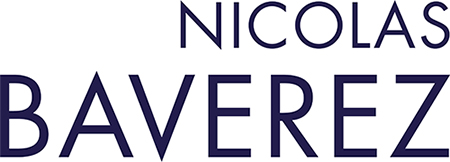Economic policy must adapt itself to the new norm of capitalism that has emerged from the 2008 crash and the pandemic.
According to Clausewitz, capitalism – just like war – is a chameleon. It mutates when affected by economic crises, wars, technological revolutions and epidemics, and the way we control it changes too.
There can be no doubt that capitalism is undergoing another major transformation. The liberal globalization phase that began in 1979 broke down with the 2008 crash, giving rise to protectionism and the readjustment of the relationship between state power and the markets.
Capitalism has been swept away by the Covid-19 epidemic. This is no longer a time for talking about free trade, shareholder capitalism, lowering taxes and public expenditure, or independent central banks. The order of the day is all about protectionism, renewed state intervention, soaring deficits and debts financed by means of currency issued by central banks that have become aids to budgetary policy, and more taxation.
Recovery makes it possible to measure the extent of the changes that have taken place. Globalization has not disappeared, but it has splintered into regions and, above all, into blocs that espouse the Cold War between the USA and China, forcing more and more countries and businesses to choose their camp.
Value chains are being reworked in order to take this new partition of the world into account, to reduce dependency on China, and to adapt to ecological transition by taking a forced march towards decarbonization. Labor and business organization have been greatly unsettled by the marked acceleration in the digital revolution. Massive recovery plans abound.
These changes go alongside a new paradigm in economic policy that prioritizes growth, full employment, and improvement in the quality and remuneration of jobs. The aim to bring an end to business activity that is at a standstill, to falling productivity and to rising inequality, all of which have been prevalent in developed countries since the beginning of the century. During the pandemic, as well as exercising its sovereign functions and keeping society together, the state has provided reinsurance with regard to company revenue and household income.
All this has meant rocketing expenditure, with public deficit and debt reaching unprecedented peacetime levels, made possible by central banks providing governments with unlimited financing. The consequence of this is increased taxes, implying the end of fiscal competition between nations, as officialized in the agreement obtained by the OECD on the minimum level of corporate taxation.
Just as Keynes had provided the theoretical framework for Franklin D. Roosevelt’s New Deal, the new monetary theory, with Stephanie Kelton as its inspiration, aims at giving this new direction a scientific basis by asserting that public deficit and debt may be increased indefinitely in order to reach full employment. But this economic policy runs some very high risks that can only be contained by a strategy that actively strengthens production and innovation.
The precondition for expanding budgetary and monetary policy is the absence of inflation. However, inflation is back, reaching 4.2% in the USA and 2% in the euro zone in May. This presages two dangers.
The first is already here, with the rise in interest rates, reaching 2.5% for 10-year American Treasury Bonds. The second is a potential yet formidable danger. It lies in the central banks’ losing their credibility because of the growing confusion between their mission and their objectives, which have been extended to full employment, the fight against inequality and the protection of the environment. Furthermore, it is pure self-deception to claim that debt can rise to unlimited levels without causing any damage.
All major crashes in the capitalist world have been preceded by a sharp expansion of liquidity and debt.
Certainly, economic policy must adapt to the new norm of capitalism that has emerged from the 2008 crash and the pandemic. The high number of crises justifies the increased role and weight of the state in relation to the market. But this can only be borne if three pre-conditions are observed. Firstly, a gentle rise in interest rates to preserve control over inflation and disarm the bubble economy. Secondly, the reconstitution of supply to balance demand, by, in the short term, resolving bottlenecks caused by the lack of work, and, in the medium term, by putting a huge effort into training, investment and innovation. Thirdly, a return to international cooperation between nations and central banks to deal with global risks, whether they be to do with health, finance, technology or the climate.
(Column published in Le Figaro, 7th June 2021)
